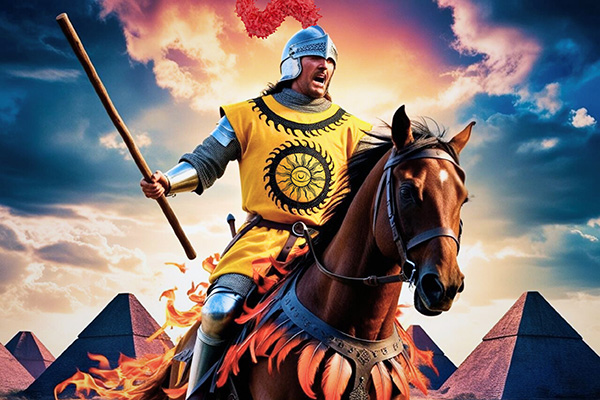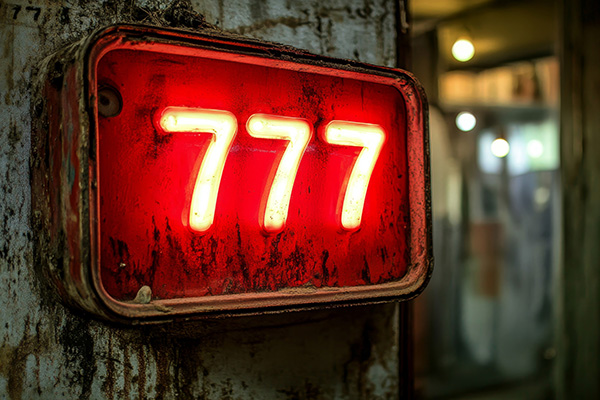tarot
Tarot Forecast June 2025: Knight Of Wands
The fiery spirit of the Knight of Wands predicts dynamic momentum, courageous action, and bold personal growth this month.
Expect a high-voltage month of movement, passion, and a strong desire for change, both internal and external. There may be significant breakthroughs, unexpected turns, and opportunities that demand quick decisions.
Whether we are taking on new roles, making bold moves in love, or advancing in our creative or career pursuits, life will be fast-paced and filled with intense passion.
The challenge will be to channel this vigorous vibe as mindfully as possible. The key will be to temper the boldness with mindfulness for the next four weeks.
If you harness this energy mindfully — acting courageously, yet not recklessly — you’ll find yourself breaking new ground in many areas of life. Staying aligned with your purpose is essential.
Stay focused and grounded, and let your drive lead you toward empowered, intentional growth. The month ahead is fast and full of potential — embrace it with vision and heart.
The Knight of Wands is traditionally depicted riding a feisty horse while wearing armor adorned with salamanders and flame-like feathers, which are symbols of transformation, drive and passion. He holds a sprouting wand aloft to represent potential and growth through action. Continue reading
The Tarot Is A Mystical Bridge To Spiritual Insight
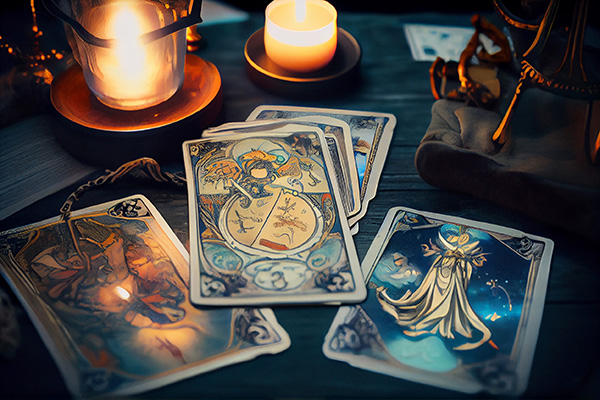 Mysterious, symbolic and highly energetic, the Tarot is a high vibrational tool that can help us explore the deeper meaning behind the events of our daily lives, and the influence of Spirit in our earthly existence.
Mysterious, symbolic and highly energetic, the Tarot is a high vibrational tool that can help us explore the deeper meaning behind the events of our daily lives, and the influence of Spirit in our earthly existence.
The Tarot especially offers guidance in situations where may feel lost or confused, and it serves as a mystical bridge between our physical reality and the metaphysical realm.
The cards have their own energy, a high vibrational frequency, which Spirit uses to communicate messages of guidance, encouragement, insight and caution.
Every Tarot reader has their own set of spiritual gifts and psychic abilities, and therefore we tend to each develop our own reading style accordingly.
In my own readings, I find that Spirit most often seeks to illuminate areas in our lives where changes and healing may be needed, in order to bring about the most beneficial future outcomes. This can be anything from the need to shift one’s perspective, to the need to let go, or sometimes the need to simply accept things as they are.
Ultimately, I find Spirit uses the Tarot to get us ‘unstuck,’ so we get back in the flow. When we are in the flow, or in alignment, we are creating with the Universe, instead of creating resistance. Only then are we truly moving toward our highest good and the fulfillment of our greatest potential.
The Tarot is a conduit for communication with our guides and our higher self, through which we can gain a deeper understanding of the soul lessons and the magic happening in our lives.
Tarot Forecast May 2025: Four Of Swords
 The Four of Swords forecasts a month of rest and recovery, reflection, and renewal. After the dynamics and challenges of the past few months, this card signals a turning point. It invites us to step back from the demands of the outside world and return to the sanctuary within.
The Four of Swords forecasts a month of rest and recovery, reflection, and renewal. After the dynamics and challenges of the past few months, this card signals a turning point. It invites us to step back from the demands of the outside world and return to the sanctuary within.
This month is not a time for striving or pushing. Instead, we are invited to honor the vital need to recharge – physically, mentally, emotionally, and spiritually. It is a month to slow down without guilt and to pause, not out of fear or avoidance, but out of reverence for the recovery process.
There is a silent power to this card’s energy of inner work and self-reflection. The universe offers a moment of stillness, a quiet space this month where we can recalibrate, gather our strength, and reconnect with what truly matters.
In this sanctuary of slowness, we can sort through our thoughts, release lingering tension, and make room for new clarity to emerge. It reminds us that slowing down is not stagnation, but a form of sacred progress.
The Four of Swords traditionally depicts a knight or pilgrim in a state of deep rest or meditation, lying on a slab of stone in what appears to be a tomb. This image is derived from medieval effigies — sculptures of knights carved into their final resting places, hands clasped in prayer, as if caught in an eternal moment of devotion and repose.
This imagery is rich in symbolism. It suggests a necessary retreat after hardship, a period of peace and quiet before the next phase of action. The surrounding stillness, lack of movement, and prayerful posture of the resting figure suggest a sacred inner space where healing, recovery, and clarity can occur.
Tarot Forecast April 2025: Five Of Wands
 The Five of Wands sets a confrontational tone this month, predicting energies of challenge, competition, and inner or outer conflict.
The Five of Wands sets a confrontational tone this month, predicting energies of challenge, competition, and inner or outer conflict.
But don’t be alarmed by the mayhem and drama it implies — this is not a card of disaster. Rather, it’s a reminder that the most meaningful growth often comes from pushing through obstacles, navigating differences, and finding our unique voice amidst the chaos and discord.
The Five of Wands represents differences that are not insurmountable, but rather opportunities for growth through constructive conflict. You may find yourself in situations where differing opinions, clashing ideas, or rivalries take center stage.
While these moments may feel chaotic at first, they have the potential to lead to breakthroughs and innovative solutions. Embrace the chaos as an opportunity to sharpen your skills and prove your resilience.
In the coming weeks you may experience moments of intensity, whether in your relationships, your career or your personal life. But this energy also urges you to rise above, to think creatively, and to remain adaptable.
While this card does not promise smooth sailing, its message is one of growth through resilience. By maintaining balance, addressing conflict head-on, and remaining open to collaboration, you can turn this month’s challenges into stepping stones to success. It’s a time to fully engage, adapt, and emerge stronger on the other side.
Tarot Forecast March 2025: Ace Of Swords
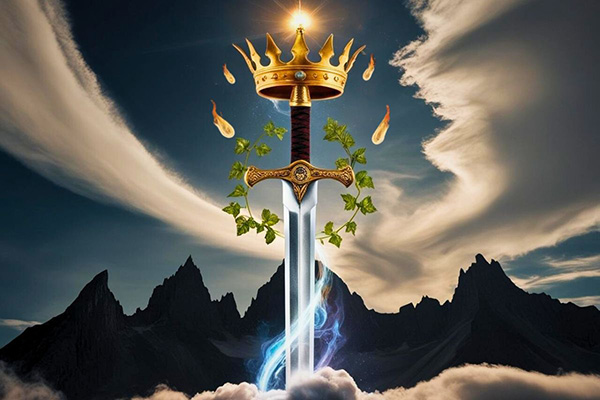 This month the Ace of Swords heralds a time of clarity, breakthroughs, and decisive action.
This month the Ace of Swords heralds a time of clarity, breakthroughs, and decisive action.
Representing the power of the mind, truth, and the ability to cut through confusion, the Ace of Swords signals a month filled with sharp insights, important conversations, and fresh perspectives.
Expect newfound mental strength, intellectual growth, and the courage to face reality — bringing clarity to various areas of life in the coming weeks.
Visually, the Ace of Swords presents a striking image. At its center, an upright sword with a gleaming blade symbolizes intellect, reason, and the ability to pierce through uncertainty. A golden crown encircles the blade, adorned with a vine or wreath, signifying success, authority, and the rewards that come from truth and justice.
The sword emerges from a cloud, representing divine inspiration or sudden insight that dispels confusion. Surrounding it, small flame-like orbs known as yods embody divine energy, enlightenment, and guidance from a higher power.
In the background, jagged mountains reflect the challenges one may face — reminding us that while clarity is powerful, the journey to truth is often met with challenges and obstacles.
The Ace of Swords signals a fresh start in thought, ideas, and perception, urging us to embrace truth, reason, and the transformative power of the mind. In the coming weeks, embrace truth in all areas of life — honesty will set you free. Use both logic and intuition, allowing your mind to guide you while staying connected to your heart. Cut through distractions and focus on what truly matters, eliminating unnecessary mental clutter.
Tarot Forecast February 2025: Four Of Pentacles
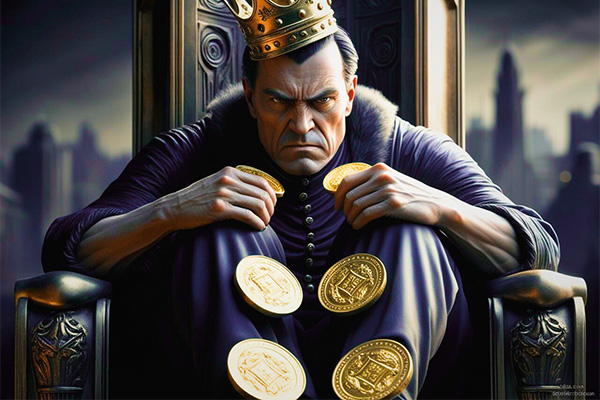 This month’s card is the Four of Pentacles, symbolizing stability, control, and a strong desire to protect one’s resources.
This month’s card is the Four of Pentacles, symbolizing stability, control, and a strong desire to protect one’s resources.
It speaks to themes of holding on to what you have earned, both materially and emotionally. However, this card also warns against becoming too protective or possessive, which can lead to stagnation and missed opportunities.
The overarching theme for the month is staying in the flow. The Four of Pentacles reminds us that while creating security and stability is important, true balance and a blessed life comes from allowing life’s energies to flow naturally.
Holding on too tightly in an attempt to control everything blocks new possibilities and opportunities, while carelessly letting go completely can lead to instability and chaos.
The challenge for February is to maintain a foundation that is both secure and adaptable — holding on to just enough to guide your path, but remaining open to the unfolding currents of life.
Traditionally, the Four of Pentacles depicts a man sitting firmly on a throne holding four pentacles or coins. He’s holding them firmly, with one balanced on his head, one in his arms, and two under his feet. This image symbolizes material attachment, greed, stinginess, and fear of loss. He is so focused on clinging to his precious possessions that he can’t concentrate on anything else.
